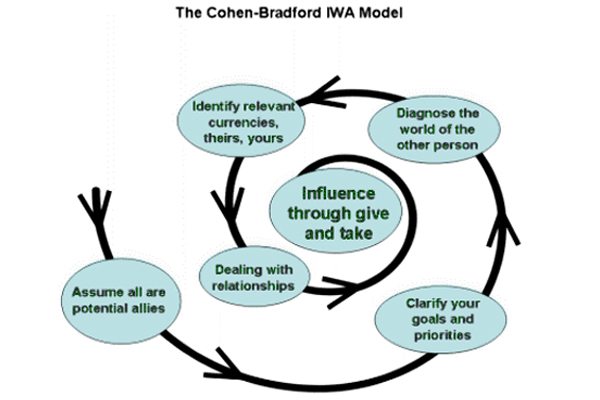In almost every workshop I facilitate, this one question keeps coming up. Someone from the group will quietly raise their hand and say something like, “I do not have a team reporting to me, I do not have a title that gives me power, yet I am expected to make things happen. How am I supposed to influence people when I have no authority?”
It is a valid question. And one that reflects the growing complexity of the modern workplace. We are now operating in matrixed organizations, where collaboration stretches across functions, hierarchies, geographies, and mindsets. Influence, not authority, is fast becoming the currency of leadership.
In fact, many of us find ourselves navigating environments where we need to lead laterally, diagonally, or even upward. Traditional power structures are giving way to networks, and the ability to move people toward a shared vision often rests more on our interpersonal skills than our designation.
I have learned over time that influence is not just about persuasion. It is about creating trust, sharing value, and aligning interests. Whether you are an entry-level analyst, a project manager, or a senior leader, your ability to influence without authority is what ultimately moves the needle.
The Difference Between Authority and Influence
Table of Contents
Let me begin by clarifying the difference. Authority is formal power. It usually comes with a title, the ability to reward or punish, or the right to make binding decisions. Influence, on the other hand, is informal power. It is about how you make people feel, how much they trust you, and whether they see value in your perspective.
You can be highly influential without ever signing a paycheck. And you can have a title that commands authority but no real impact if people do not believe in you.
I came across a fascinating example a few years ago. Bank of America, during a board meeting, decided to implement a five dollar monthly fee for debit card users. The backlash came not from a senator or a CEO, but from a McDonald’s employee who started a campaign on social media. Her influence sparked widespread outrage, and eventually, the bank reversed its decision.
That example stayed with me. Influence is not always about being the loudest in the room. Sometimes it is about being the most relatable, the most thoughtful, or the most connected.
The Cohen and Bradford Model of Influence
One of the frameworks I often refer to comes from Allan R. Cohen and David L. Bradford in their book Influence Without Authority. Their model is a practical and thoughtful approach to navigating influence in any environment. Let me walk you through it, with some real-world insights on how I have seen it work.
1. Assume Everyone Is a Potential Ally
I will be honest, this one takes conscious effort. It is so easy to write people off. That manager who always seems uninterested. That teammate who never responds to your emails. But when we stereotype others, we close doors before they have even been opened.
Assuming everyone is a potential ally is not about being naive. It is about being strategic. It is about choosing to approach people with curiosity rather than judgment.
One way I put this into practice is by learning about people’s journeys. What motivates them? What are their strengths? When we drop the assumptions, we start seeing opportunities to connect.
2. Clarify Your Goals and Priorities
Most of us know what we want. But we often do not articulate it clearly to others. This can lead to misunderstandings, mismatched expectations, or even resistance.
When you are trying to influence someone, be upfront about your goals. Also, be clear about what matters most and what you are willing to compromise on.
I once worked with a team that was trying to get buy-in for a new project. They kept hitting roadblocks until they finally shared why the project mattered to them personally and how it aligned with the larger vision. That small shift in communication opened the floodgates of support.
3. Diagnose the Other Person’s World
This step is crucial. Influence is not just about what you want. It is about understanding what the other person values. What pressures are they facing? What does success look like for them?
I like to ask myself a few questions whenever I am preparing to influence someone:
- How is this person being evaluated?
- What are their priorities right now?
- What might they lose or gain by supporting me?
- Who else might be influencing their decision?
When we take the time to see the world through the other person’s eyes, we gain clarity on how to shape our message.
4. Identify Relevant Currencies
Cohen and Bradford use the term “currencies” to describe the things people value. These currencies can vary widely depending on the individual and the context.
Here are some I have found particularly helpful in organizational settings:
- Inspiration currencies: Will this appeal to their sense of purpose or meaning?
- Task-related currencies: Will this make their job easier or more interesting?
- Position-related currencies: Will this give them more visibility or recognition?
- Relationship currencies: Will this strengthen their network or support their team?
- Personal currencies: Will this help them learn, grow, or feel appreciated?
The art of influence lies in identifying the right currency for the right person.
5. Build Relationships
At the heart of all influence is trust. And trust is built through consistent, genuine relationships.
Every interaction you have with someone either deposits or withdraws from what I call the emotional bank account. Small actions, like showing up on time, listening actively, or following through on promises, go a long way in building credibility.
At FocusU, we often use tools like the MBTI to help teams understand each other better. But even without psychometric tools, the key is empathy. Get to know the person behind the role. What are their hopes, their fears, their motivations?
When people feel seen and heard, they are far more likely to be influenced by you.
You can explore more about how to build these bridges of trust in our related post on how to break silos within an organisation links blog.
6. Influence Through Give and Take
This is where it all comes together. You now know what matters to you, what matters to them, and how to bridge the gap. Influence becomes a process of exchange.
But be careful here. This is not about manipulation. It is about co-creation. When you make an offer, do it with respect. Make sure it is fair and mutually beneficial.
One of the best ways I have seen this work is when teams are transparent about their limitations and generous with their support. I remember a colleague once saying, “I know this ask adds to your workload. What can I do to support you so that we both win?” That sentence transformed the conversation from transactional to collaborative.
You can find more on collaborative influence in our post on Unilever Bangladesh’s Influence Workshops links blog.
Influence in the Digital Age
We are also living in a time when digital tools have amplified our ability to influence. A simple LinkedIn post, a thoughtful email, or a well-timed comment in a virtual meeting can shift perception in powerful ways.
But the fundamentals remain the same. Whether in person or online, influence is rooted in relevance, credibility, and connection.
In fact, learning to communicate effectively across different formats has become a core part of leadership. You may find inspiration in our blog on how to make effective conversations links blog which shares insights on navigating workplace dynamics.
My Takeaway
If there is one thing I have learned, it is this. You do not need a title to make an impact. What you need is a mindset of service, a deep understanding of people, and a willingness to lead from wherever you are.
Influence without authority is not just a skill. It is a philosophy. It asks us to focus on connection over control, on trust over tactics, and on value over volume.
The next time you feel stuck because you lack formal authority, take a step back. Reflect on what you can offer, how you can connect, and where you can serve. That is where true influence begins.










